City Stories | Quito, Ecuador: Eco-Efficiency Tool for the Metropolitan District of Quito
Cities have always been a source of innovation, and outstanding urban innovations will serve as a guiding reference for cities around the world to find new solutions. The report Learning from the 5th Guangzhou International Award for Urban Innovation features interviews with the protagonists and stakeholders involved in the fifteen shortlisted initiatives of the 5th Guangzhou Award and an evaluation of their systemic impact and global relevance. This section will share the knowledge and experience of urban governance innovation with readers by selecting excellent urban innovation cases from the report.
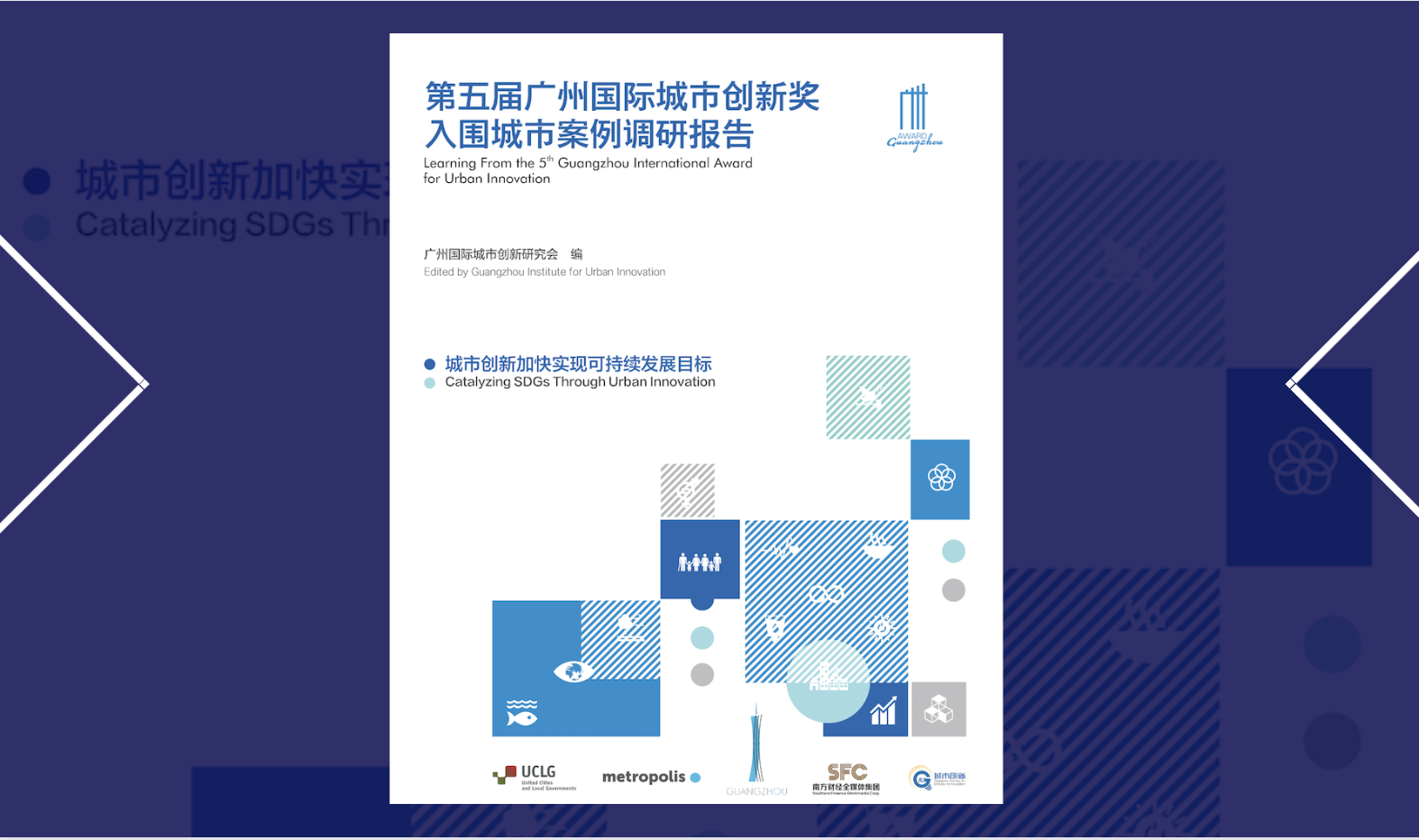
After nearly ten years since the first round of financing was approved, Quito is about to inaugurate an underground metro system. The Ecuadorian capital hopes this 22 km line running from north to south will improve urban mobility in a city increasingly congested with private automobiles.
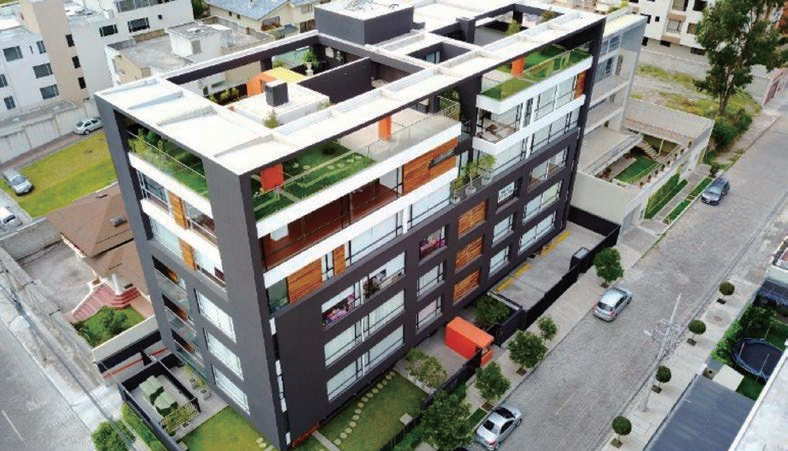
These big changes underground are also accompanied by big changes above ground thanks to the Quito Metropolitan District’s 2019 value capture and ecoefficiency ordinance, which permits real estate developers to build 50% higher near BRT stations and 100% higher near metro stations provided they follow stricter energy efficient building standards.
With this ordinance, metropolitan Quito is hoping to “change the territorial model”, said Vladimir Tapia,Metropolitan Director of Land Use Planning and Policy fo rthe regional government. He described the current model of growth in Quito as urban sprawl on the one hand and the concentration of jobs and services in just one expensive, central part of the city on the other hand. Those dynamics could change with opportunities for denser construction at the 15 new metro stations as well as near the 3 BRT lines that have been built over the 25 years.
“We have an important offer to transform the city and switch to a polycentric model,” Tapia said. “You can now build up to 20 stories in parts of the south of Quito when previously you could build only six stories.”
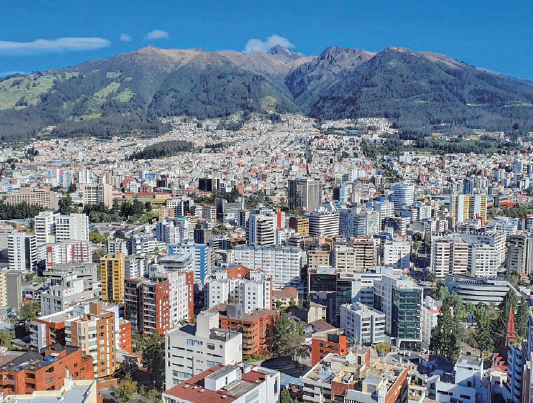
In exchange for this additional building capacity, real estate investors pay into the public coffers. Thus far, the Quito Metropolitan District has collected US$10,669,816. There are 60 buildings in the construction pipeline worth an estimated land value tax of US$20 million.
While many land value capture schemes are designed to pay for the infrastructure investment that generated the additional value, Quito operates differently. The Inter-American Development Bank financed the $200 million investment to build the Quito Metro’s Line 1. Instead, the funds from land value capture taxes are invested in improving parks and green areas, building playgrounds, and acquiring land parcels near the new metro stations for social housing. Ecuadorian law permits the public sector to buy land for social housing at the previous year’s price before the valuation from an infrastructure investment like the metro. This measure prevents speculative interest from driving up the cost of land that private investors anticipate will be attractive to the public sector.
“Quito has few builders and developers, but the biggest ones are pursuing new construction,” said Rosa Elena Donoso, a housing consultant and applied researcher. “The ordinance also permits and incentivizes joining together parcels because in many cases lots are small and it is impossible to build up without combining parcels.”
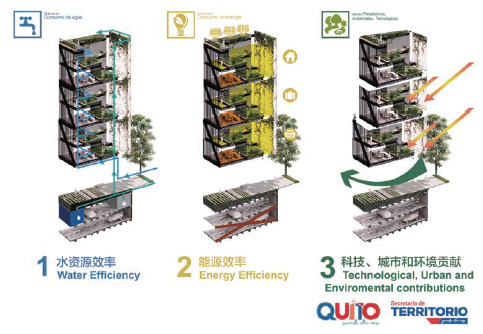
William Elmir & Associados Real Estate Group is one of those companies. The multigenerational family company has specialized in residential housing for 30 years. “Quito is one of the most complex cities in Ecuador for real estate,” said Project Manager Daniel Elmir. “Half of the city does not permit development so people are migrating to the valleys.”
But the company is investing more in the center of the city due to the new regulations with two new projects in La Carolina neighborhood where the firm paid for four more floors on one building and eight more floors on the other.“Land is very expensive in Quito so without the extra floors, the project would not have happened,” Elmir said.
However, he believes that the city should reduce thecost for additional floors in order to encourage smaller and less capitalized companies to participate. “If you drop the price, you’ll get two to three times more because many more companies will want to build,” he said. “In a neighborhood like La Carolina, buying additional floors can be as expensive as buying the lot next door. In that case, I’d prefer to buy on the lot next door rather than additional floors.”
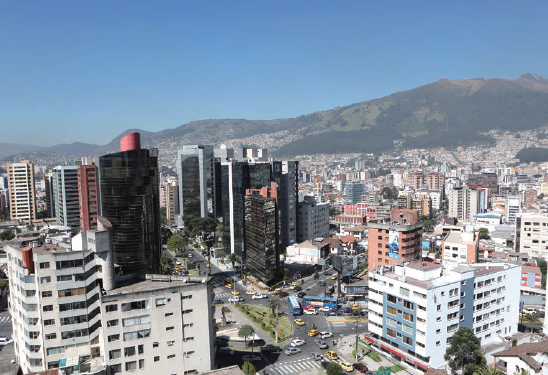
Tapia recognizes these challenges for the relatively immature Ecuadorian real estate industry. “Even before the pandemic, upwards of 95% of real estate companies don’t have enough liquidity to develop more than eight floors,” he said. “We need new business models for the real estate sector because the small-to-medium companies just look for cheap lots in rural areas to build small houses or fourstory buildings.” There has been significant land value capture activity around only five of the 15 stations thus far.
The COVID-19 pandemic was also devastating to Ecuador’s economy, which will slow down the real estate pipeline. There were no new projects contributing to the land value capture tax in 2020, but Tapia is hopeful that 2022 will begin a long recovery.
When new construction does take place, however, it will also meet high energy efficiency standards. Quito is the only city in Ecuador that requires stricter building efficiency as part of the purchase of additional floors for construction. Elmir welcomes this requirement but wishes that Quito would adopt an international standard like LEED or IGCC rather than rely on the national Colegio de Arquitectos.
Even as the land value capture and ecoefficiency ordinance is just two years young and may have suffered a setback due to the pandemic recession, Elena Donoso believes the ordinance is a major step forward for local implementation after Ecuador adopted a landmark national land use and planning law in 2016. “It is an important advance that has been achieved to consolidate better urban planning processes,” she said. “The ordinance confirms the idea that the space created through additional height first must have an urban logic, such as around metro stations or in locations with sufficient infrastructure, and then also be energy efficient.”
Author:Gregory Scruggs
The Guangzhou International Award for Urban Innovation is co-sponsored by the City of Guangzhou, the United Cities and Local Governments (UCLG) and the World Association of the Major Metropolises (Metropolis). The aim of the Guangzhou Award is to recognize innovation in improving social, economic, and environmental sustainability and good urban governance in cities and regions and, in so doing, to advance the prosperity and quality of life of their citizens. So far, five cycles have been held, attracting over 1,300 initiatives worldwide. It has become a global platform for city-to-city learning on urban innovation and the documentation, dissemination, and analysis of the local implementation of global agendas including SDGs and New Urban Agenda (NUA). The 5th cycle of the Guangzhou Award, held in the context of the Covid-19 pandemic, received 273 submissions from 175 cities and 60 countries around the world.


 In Focus | World Cities Day: People-Centred Smart Cities
In Focus | World Cities Day: People-Centred Smart Cities City Stories | Fostering community resilience: A lifeline for the Central African Republic
City Stories | Fostering community resilience: A lifeline for the Central African Republic In Focus | Innovative Education, Empowering Futures
In Focus | Innovative Education, Empowering Futures




















 Tel: +86 020 3780 4434
Tel: +86 020 3780 4434 Email: info@guangzhouaward.org
Email: info@guangzhouaward.org Adress: Unit 01-7, 28th Floor, No. 7, Chunrong 3rd Road, Tianhe District, Guangzhou, Guangdong, 510000, PRC
Adress: Unit 01-7, 28th Floor, No. 7, Chunrong 3rd Road, Tianhe District, Guangzhou, Guangdong, 510000, PRC




